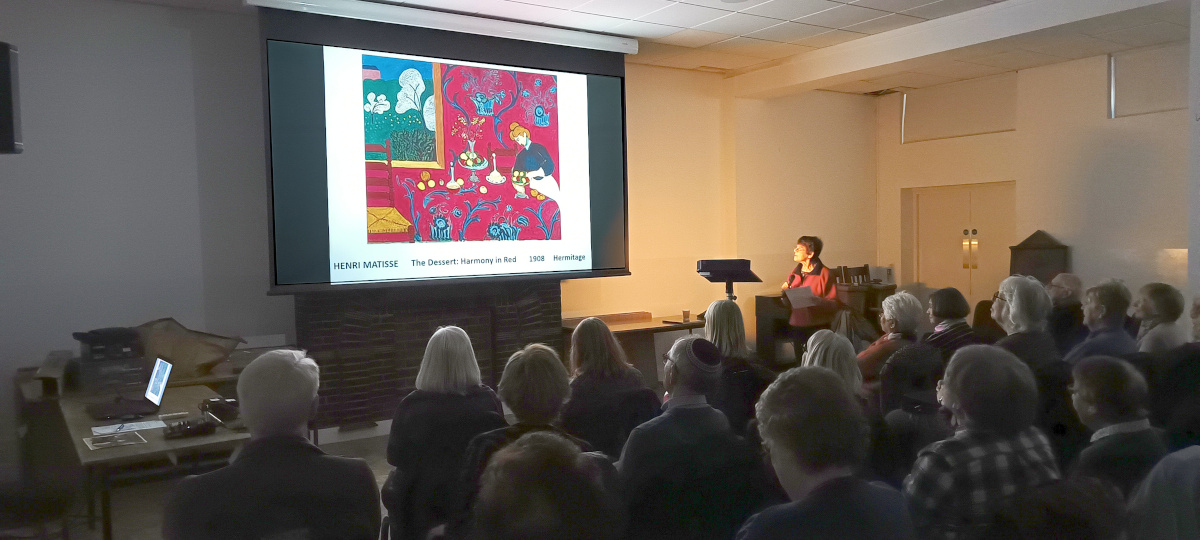This week’s talk by Jennifer on the Golden Age of Dutch Art concentrated on a selection of works brought to the session by the members of the u3a. The only constraint was that the painting should show an interior scene. There was no constraint of country, style or period, and that led to a very interesting selection of paintings for discussion.
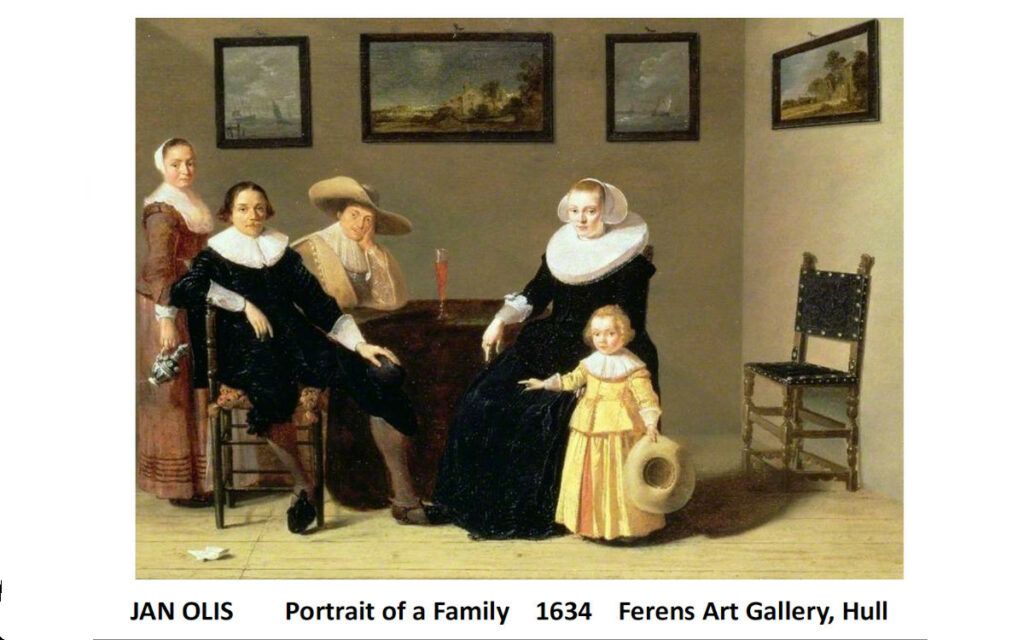
We started where we had spent the last few weeks, with a work by Jan Olis – a Dutch artist who had painted a conventional family in 1634, but on close inspection, there were many anomalies in the composition to be explained.
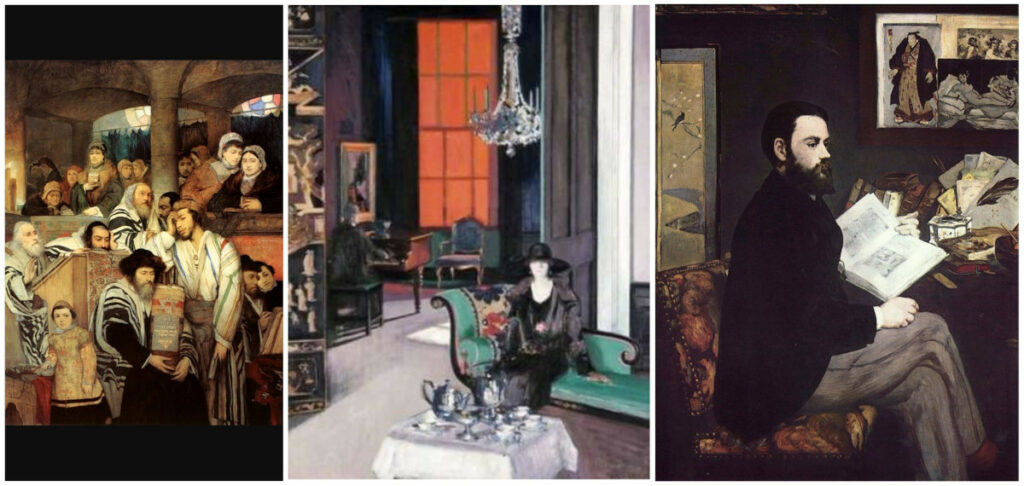
Jews Praying in the Synagogue
on Yom Kippur
The Orange Blind
A Portrait of Emil Zola
That was followed by a Ukrainian artist, Maurycy Gottlieb, who had painted Jews praying in the Synagogue in 1878, and thoughtfully included his own memorial in the painting – he died by his own hand one year after the painting was finished. We then moved on to a more pleasant aspect with a woman having her hair combed in a harem, painted by the Turkish artist Osman Hamid Bey in 1880. There were many colourful details to be enjoyed, including a pair of house slippers similar to those in the Arnolfili Family portrait.
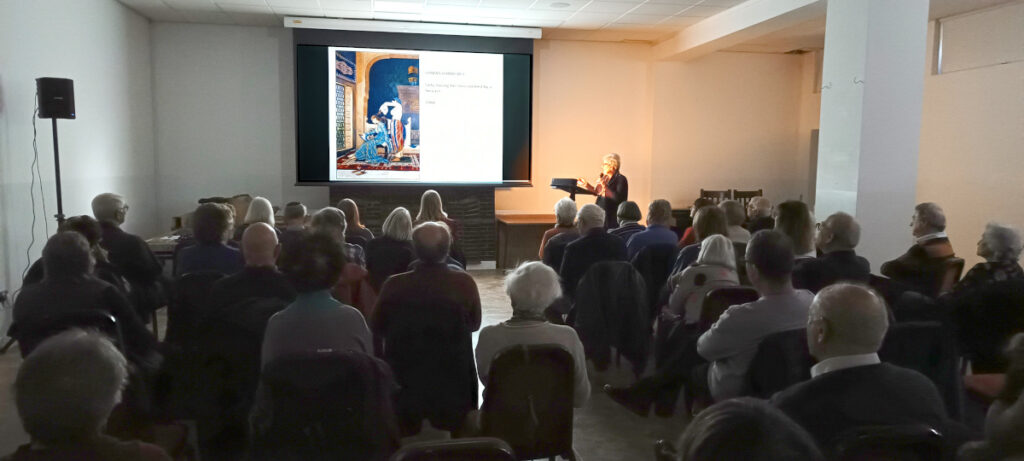
From hair combing in a harem, we moved to hair combing in Paris with Edgar Degas’ Combing the Hair (Le Coiffure) from 1896, with an abundance of red paint in the picture. The painting had been bought by Henri Matisse, which took us nicely to ‘The Dessert: Harmony in Red’ by Henri Matisse (1908). This was from Matisse’s Fauvism period which concentrated on bold savage and primitive colours, applied aggressively by the artist.
We then moved on to the portrait of Emile Zola by Edouard Manet (1868) which showed Zola at his desk in his study with the tools of his profession to hand. There is discussion as to whether it was painted in Manet’s studio or Zola’s actual study, and the consensus was that Manet had recreated Zola’s study in his studio for the portrait. From Emile Zola, it was a short hop to the Folies Bergère for Edouard Manet’s last major work ‘Un bar aux Folies Bergère’ (1882). The geometry of this painting can be puzzling as there may be a mirror in it, although some thought not. The details in the painting were much enjoyed, including the opera glasses and the trapeze.
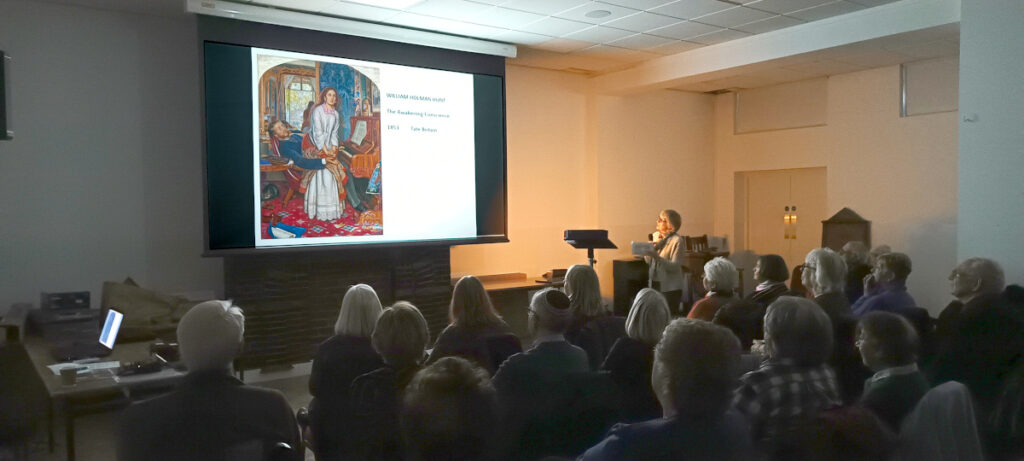
We then moved to the pre-Raphaelite William Holman Hunt and The Awakening Conscience (1853), a disturbing picture of a young lady and a gentleman enjoying a quiet musical moment in a sitting room. The painting has writing in its top corners that was tiny, but we were able to read it thanks to magnification and found that it referred to restoration work done in the 1860s. The painting is full of allegories dealing with the subjects and their surroundings, including a cat trapping a small bird.
That was followed by The Orange Blind of Francis Cadell (1927) with an anonymous lady waiting for teatime companions whilst a pianist plays in the next room. The painting is an example of the Scottish Colourists school, taking compositional elements from Vermeer, colours from the Fauvrists and lighting from the Chiaroscuro school.
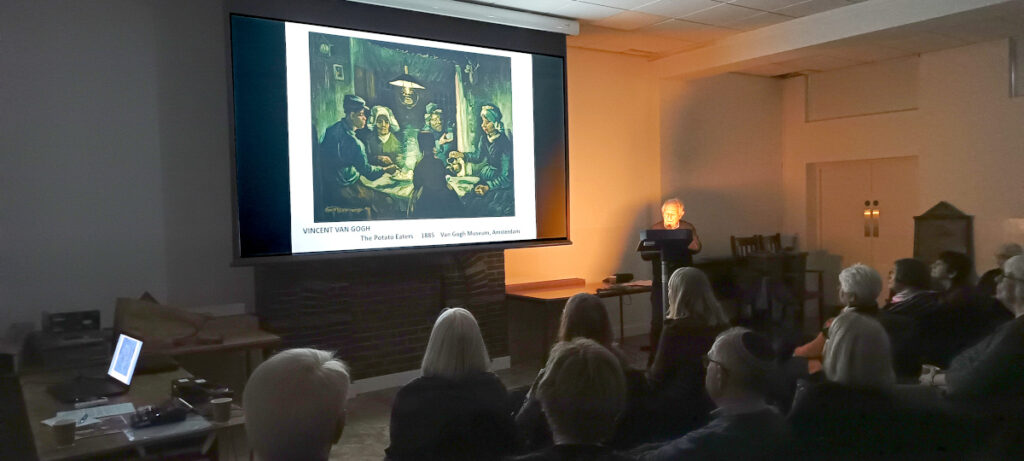
Our last painting, The Potato Eaters by Vincent Van Gogh (1885) developed these themes to a conclusion, with the colouring, the clothing, the meal and the chiaroscuro lighting in the painting. Through all these paintings, Jennifer held our attention and weaved her artistic thread through the contributions of the members. We still have more to come next week in the final part of this course.

